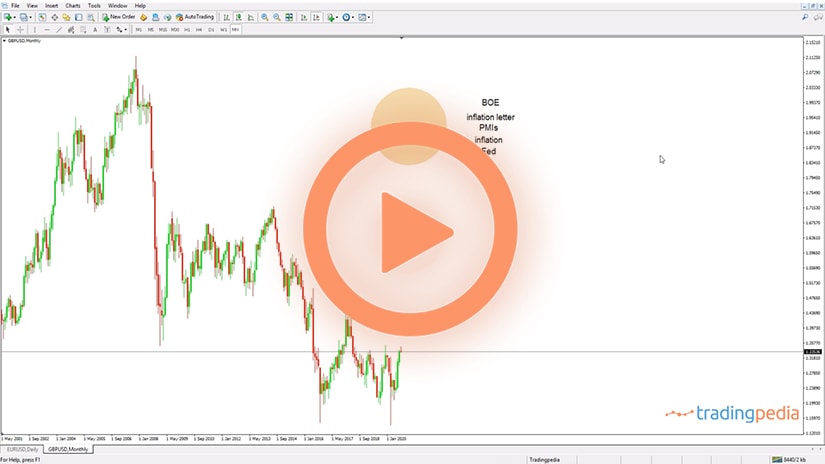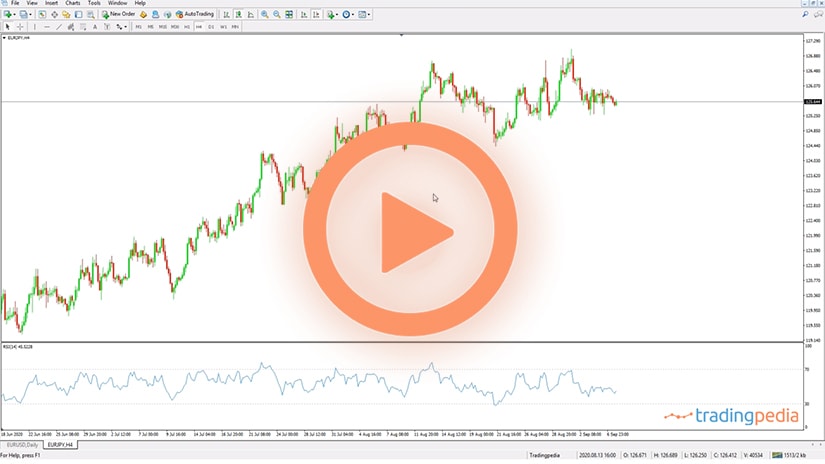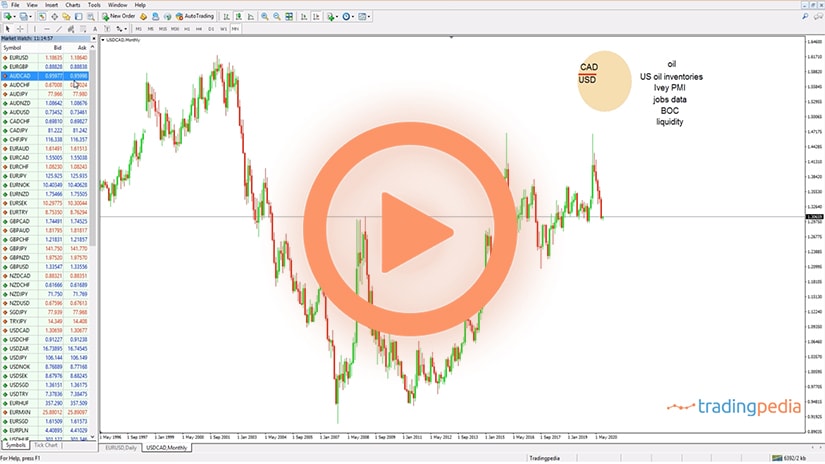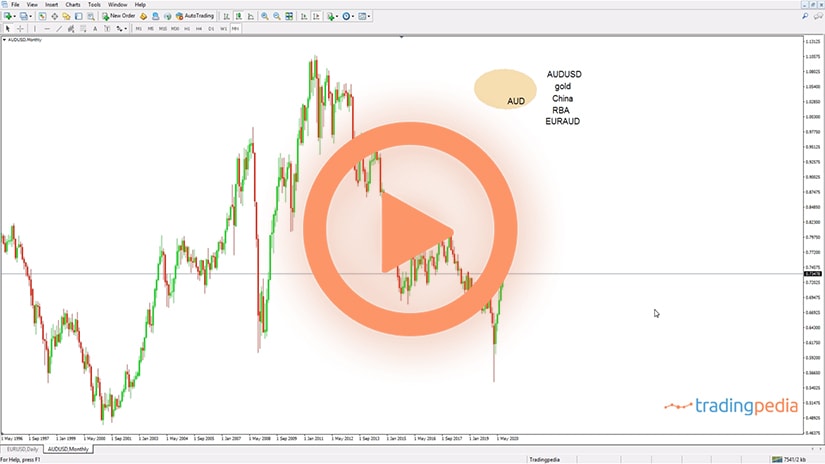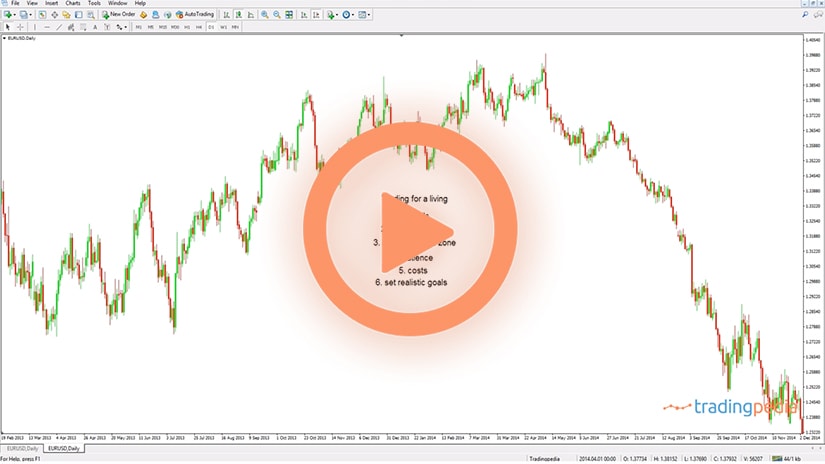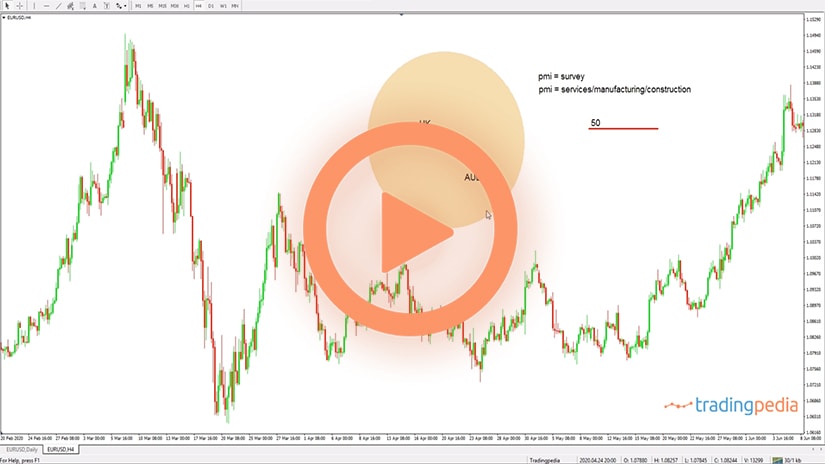
Hello there, this is tradingpedia.com and this video continues the Elliott Waves series that we have started quite some time now. We move on with a different type of corrective waves – zigzags.
Zigzags are one of the most trickiest patterns in the Elliott Waves Theory because they resemble impulsive waves. Impulsive waves look like this – let’s say that this is the first wave, so one, two, three, four and five. This is an impulsive wave with the Elliott Waves Theory. But a zigzag is a corrective wave.
Like any corrective wave, a zigzag has a three-wave structure. These are labeled with letters: a-b-c. However, out of these three waves, only the b-wave is corrective. This is very important because it makes the entire pattern quite interesting.
The a-b-c waves
The three waves, the a-b-c, form a corrective pattern. But, of a lower degree, two of the waves are impulsive, and only the b-wave is corrective. If you check the details on the flat pattern, we said that waves a and b are corrective, and only the c-wave is impulsive. Also, that the b-wave should retrace beyond 61.8% of the previous wave a.
The b-wave also holds the key when interpreting a zigzag. It must not retrace more than 61.8% of wave a. In plain English, it should be shorter than 61.8% of wave in the case of a zigzag, while it must be longer than 61.8% in a flat. That is mandatory in the Elliott Waves Theory.
The two impulsive waves make it very difficult for traders to interpret a zigzag because you will have literally two impulsive waves rather than only one in a flat pattern. Let’s imagine a zigzag.
In a zigzag, let’s say we have a move lower – wave a. Next, the b-wave would retrace something like this. You may want to take a note that the b-wave rarely exceeds 38.2% of wave a. That is a great place to start trading the c-wave.
The c-wave of a zigzag is an impulsive wave. Waves a and c can be any type of impulsive wave – first, third, or a fifth wave extension. But in a zigzag the most important rule is the so-called time rule.
To make the most of it, it means that in a zigzag not only the structure of the waves is important, but also the time. Namely, the time that it took wave a to form should equal the time it took the c-wave to form. For instance, this is a zigzag. But if the market goes like this, this is no zigzag, even if you had the impression that this is an impulsive wave, that this one too, that the b-wave has retraced less than 61.8%, etc.
In order for it to be zigzag, the market needs to end the c-wave in approximately the same time as it took wave a to form. This is a very important feature for a zigzag, and gives you an educated guess where the impulsive wave at the end of the zigzag will end.
Understanding a zigzag is very important because impulsive waves form often, but mostly during zigzag and not during stand-alone individual impulsive waves – because markets spend most of the time in corrective waves, that may have impulsive structures. However, corrective waves may have impulsive structures. Just like the c-wave of a flat is impulsive, waves a and c of a zigzag are impulsive as well.
An example
Imagine here – these is the EURUSD 4h chart and we see that it moved higher from 1.12 here all the way to 1.20. Is this an impulsive wave? It doesn’t look like an impulsive wave because in an impulsive wave at least one wave needs to be extended.
If we label this one 1-2-3-4-5, the third needs to be impulsive as well. However, it is split in the middle, meaning it has no extension, so it is no impulsive wave. If it is no impulsive wave, then the only other option is that the market forms a corrective wave – a zig, a flat or a triangle.
This is no flat because there is no b-wave that retraces more than 61.8%. So, if we are to have an educated guess, this is a zigzag and somewhere here would be wave a, here the b-wave, and here the c-wave.
Related Videos
The Time Rule
Remember the time rule? If you find a wave a and you interpret its time and project it for the c-wave and they are the same, then you have a zigzag. Otherwise, that is not a zigzag pattern.
To sum up – a zigzag is a three-wave pattern, a corrective wave; waves a and c are impulsive, wave b is corrective; the key stays with the b-wave, just like in a flat; the b-wave should not retrace more than 61.8% of wave b and rarely retraces more than 38.2% of it; the time rule states that the time it takes wave a to form should equal the time it takes the c-wave too.
Bye, bye.
